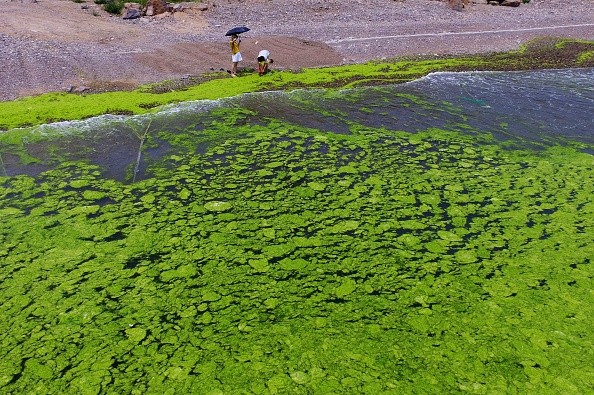Algae are a varied category of aquatic plant-like creatures. Phytoplankton is a term used to describe oceanic algae.
These basic creatures generate energy from sunlight through photosynthesis, which allows them to manufacture carbohydrates, oils, and proteins.
These can then be processed to produce a third-generation biofuel. Biofuel is any fuel derived from living things or living things' waste products (like fecal matter or urine).
Texas A&M AgriLife Research experts are utilizing artificial intelligence to create a new world record for generating algae as a dependable, cost-effective source of biofuel for jet airplanes and other transportation requirements.
Using algae as a biofuel

The research is being led by Joshua Yuan, Ph.D., an AgriLife Research scientist, professor, and chair of Synthetic Biology and Renewable Products at the Texas A&M College of Agriculture and Life Sciences Department of Plant Pathology and Microbiology, as per Tech Xplore.
Overcoming these obstacles might allow viable algal biofuels to cut carbon emissions, ameliorate climate change, reduce reliance on petroleum, and reshape the bioeconomy, according to Yuan.
Yuan has previously succeeded in converting maize stubble, grasses, and mesquite into compostable, lightweight materials and biopolymers.
His most recent effort predicts algae light penetration, development, and optimal density using a proprietary artificial intelligence advanced learning model. The prediction model enables continuous harvesting of synthetic algae using hydroponics to sustain fast development at the right density for the greatest light availability.
Algae to renewable energy
According to the book Renewable and Sustainable Energy Reviews: Algae as a sustainable energy source for biofuel production in Iran, Algae may be immediately transformed into energy, such as biodiesel, bioethanol, and biomethanol, and hence can be a renewable energy source.
Because of its greater yield of non-edible oil production and quick growth that does not compete for land with food production, biodiesel generation from algae is gaining popularity. About half of the weight of algae is oil, and this lipid oil may be utilized to generate biodiesel.
Algae can produce 30 times the amount of oil per acre as the crops now utilized in biodiesel manufacturing.
Processes for producing biodiesel from algae oil are comparable to those used to produce biodiesel from food and non-food crops.
Because of the drawbacks of fossil fuels, renewable energy sources are gaining traction for long-term energy development and environmental conservation. Iran has a significant biofuel energy potential among renewable sources.
Making algae to economical energy
According to the journal research, scaling up the SAC with an outdoor pond system results in biomass production of 43.3 grams per square meter per day, lowering the minimum biomass selling price to around $281 per ton.
In comparison, the usual low-cost biomass feedstock for ethanol is maize, which is now at $6 per bushel or $260 per ton.
Yuan's method, on the other hand, does not necessitate any expensive pre-treatment before fermentation. Before fermentation, the corn must be processed and the mash must be heated.
Despite the tremendous potential and intensive efforts, the commercialization of algae biofuel has been hampered by limited sunlight penetration, poor culture dynamics, relatively low yield, and a lack of cost-effective industrial harvest techniques, according to Yuan.
© 2025 NatureWorldNews.com All rights reserved. Do not reproduce without permission.





